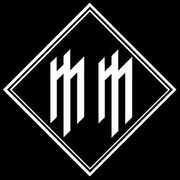Difference between revisions of "Category:The Golden Age of Grotesque era"
From MansonWiki, the Marilyn Manson encyclopedia
(Created page with "right<br> Beginning in 2002, The Golden Age of Grotesque era was the band's journey with experimentation into new soun...") |
(http->https) |
||
| Line 1: | Line 1: | ||
[[Image:GAOGMM.jpg|thumb|right]]<br> Beginning in 2002, [[The Golden Age of Grotesque]] era was the [[Marilyn Manson (band)|band]]'s journey with experimentation into new sounds (electronic/industrial rock) after bassist [[Twiggy Ramirez]] had left the band and was replaced with [[Tim Skold]]. The album contained imagery from the Weimar Republic, Nazi Germany, the Swing Era of the 1930s, and Vaudeville, and dealt with the themes of commercial success in music (selling out) and "degenerate" art. The era spawned some of the band's most popular hits, namely "[[Tainted Love]]", a cover of the popular Gloria Jones song, though done in the style of Soft Cell's cover version of the song. | [[Image:GAOGMM.jpg|thumb|right]]<br> Beginning in 2002, [[The Golden Age of Grotesque]] era was the [[Marilyn Manson (band)|band]]'s journey with experimentation into new sounds (electronic/industrial rock) after bassist [[Twiggy Ramirez]] had left the band and was replaced with [[Tim Skold]]. The album contained imagery from the Weimar Republic, Nazi Germany, the Swing Era of the 1930s, and Vaudeville, and dealt with the themes of commercial success in music (selling out) and "degenerate" art. The era spawned some of the band's most popular hits, namely "[[Tainted Love]]", a cover of the popular Gloria Jones song, though done in the style of Soft Cell's cover version of the song. | ||
| − | Lyrically, the album was composed less of metaphors and did not tell a specific story; rather, it contained a large amount of wordplay and multiple allusions to early twentieth-century film, literature, entertainment, and overall culture. [[Marilyn Manson|Manson]] had collaborated with artist [[Gottfried Helnwein]] for most of the visual aspects of the era and drew heavily from Mel Gordon's 2000 book ''Voluptuous Panic: The Erotic World of Weimar Berlin''. For an in-depth analysis on The Golden Age of Grotesque please visit <span class="plainlinks">[ | + | Lyrically, the album was composed less of metaphors and did not tell a specific story; rather, it contained a large amount of wordplay and multiple allusions to early twentieth-century film, literature, entertainment, and overall culture. [[Marilyn Manson|Manson]] had collaborated with artist [[Gottfried Helnwein]] for most of the visual aspects of the era and drew heavily from Mel Gordon's 2000 book ''Voluptuous Panic: The Erotic World of Weimar Berlin''. For an in-depth analysis on The Golden Age of Grotesque please visit <span class="plainlinks">[https://www.nachtkabarett.com/ArtAndTheGoldenAgeOfGrotesque| Art & The Golden Age Of Grotesque]</span> on <span class="plainlinks">[https://www.nachtkabarett.com The Nachtkabarett]</span> |
Latest revision as of 12:07, 20 January 2024
Beginning in 2002, The Golden Age of Grotesque era was the band's journey with experimentation into new sounds (electronic/industrial rock) after bassist Twiggy Ramirez had left the band and was replaced with Tim Skold. The album contained imagery from the Weimar Republic, Nazi Germany, the Swing Era of the 1930s, and Vaudeville, and dealt with the themes of commercial success in music (selling out) and "degenerate" art. The era spawned some of the band's most popular hits, namely "Tainted Love", a cover of the popular Gloria Jones song, though done in the style of Soft Cell's cover version of the song.
Lyrically, the album was composed less of metaphors and did not tell a specific story; rather, it contained a large amount of wordplay and multiple allusions to early twentieth-century film, literature, entertainment, and overall culture. Manson had collaborated with artist Gottfried Helnwein for most of the visual aspects of the era and drew heavily from Mel Gordon's 2000 book Voluptuous Panic: The Erotic World of Weimar Berlin. For an in-depth analysis on The Golden Age of Grotesque please visit Art & The Golden Age Of Grotesque on The Nachtkabarett
Pages in category "The Golden Age of Grotesque era"
The following 200 pages are in this category, out of 205 total.
(previous 200) (next 200)(previous 200) (next 200)
